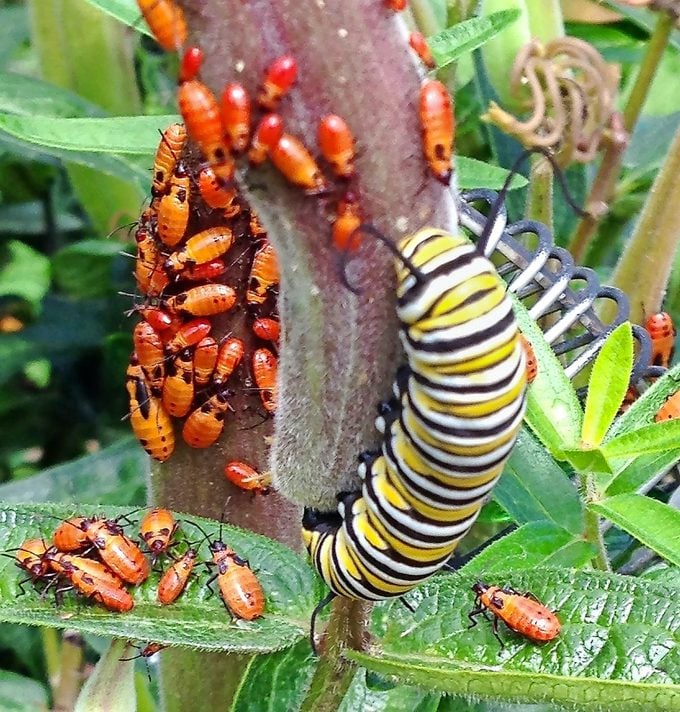Should Gardeners Remove Milkweed Bugs?
Updated: Jun. 21, 2023
Find out what milkweed bugs and milkweed assassin bugs look like and if you should remove these bugs from your plants when you spot them.
What Does a Large Milkweed Bug Look Like?

“What are these red bugs, and can they harm my butterfly weed plants?” asks Birds & Blooms Reader Nancy Dietrich.
Horticultural expert Melinda Myers writes, “These colorful insects are milkweed bugs (Oncopeltus fasciatus) in their immature stage. Adults are flatter, more elongated, and orange and black, and they resemble a boxelder bug. An immature milkweed bug feeds on the plant’s sap and seeds. To get at the sap, it injects a chemical into the plant tissue. This liquefies the tissue, allowing the bug to suck it up.”
Check out the ultimate guide to growing milkweed plants for monarchs.
Should You Remove Milkweed Bugs?

“By late summer my milkweed plants are attacked by milkweed bugs. How can I safely eliminate the bugs?” asks reader Jan Mooney of Baltimore, Maryland.
Birds & Blooms contributor Jill Staake says it’s not necessary to eliminate milkweed bugs. “Milkweed bugs might seem like an annoyance, but they rarely cause enough damage to plants to be an actual problem,” she says, mentioning that they are “completely harmless” to monarch caterpillars and butterflies.
If you’d still rather not have a single milkweed bug on your milkweed, there are a few options you can try. First, you can always pick them off by yourself. Jill recommends, “a strong squirt from the garden hose.” You can also eliminate leaf litter and spent stalks where the bugs overwinter to help reduce next year’s population.
Melinda says, “Fortunately, milkweed bugs do not cause permanent damage to milkweed plants, but large populations can crowd out the monarch caterpillars. Try knocking the unwanted insects into a can of soapy water. This method is a bit faster and easier than hand-picking and squashing individual insects. Avoid using insecticides, as even organic products can harm the monarch caterpillars.” Instead, stick to natural pest-control solutions like those mentioned above.
Meet the milkweed tussock moth and caterpillar.
Milkweed Bugs vs Milkweed Assassin Bugs

Despite the similar names, the milkweed bug and milkweed assassin bug (Zelus longipes) are different insects. Milkweed bugs are herbivorous and feed only on milkweed plants. Assassin bugs are carnivorous, feeding on other insects. Although the name sounds scary, humans don’t have a whole lot to fear from milkweed assassin bugs. They won’t cause damage to gardens, and sometimes, they might even take out other pests that gardeners dislike.
“Milkweed assassin bugs do eat monarch caterpillars, but they also eat a large variety of other insects, many of which are considered garden pests,” Jill Staake explains. (Psst—watch out for these monarch butterfly predators and parasites). “It’s generally best to let nature take its course, unless you don’t have any surviving caterpillars at all.” If that’s the case, Jill says you can remove the bugs by hand — but wear garden gloves, because the bugs occasionally bite.
Next, learn how to tell the difference between monarch eggs and aphids.




















